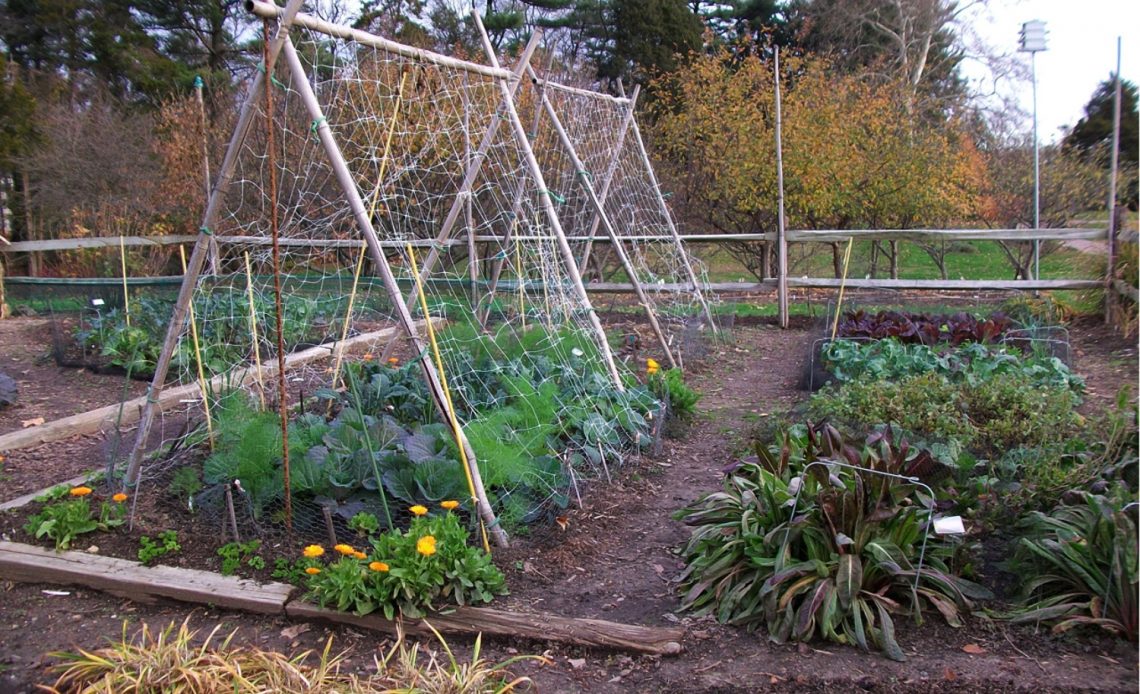

We’re here to help! Wild Yards is a completely free website that is 100% dedicated to helping you create a wildlife-friendly, sustainable yard. Read more
WildYards is reader-supported. When you buy a product through a link on our site, we may earn a comission. Every product is independently selected by our (obsessive) editors and our reviews are unbiased and objective. Read more about our mission or our privacy policy.
Starting a sustainable vegetable garden may sound like a daunting task. But it’s actually not too different than organic gardening. If you’re already growing your fruits and veggies without the use of chemicals, then you’re just a hop, skip, and jump away from gardening sustainably, too. Overall, sustainable vegetable gardening is easy. With a little careful planning, you can save yourself time, labor, and money in the long run, all while doing your part to support the environment.
The goal of a sustainable garden is to reduce, reuse, recycle, and rethink the traditional approach to gardening. This means using locally sourced materials, harvesting rainwater, and relying on natural methods of pest control, among other sustainable gardening tactics.
What does it mean to have a sustainable vegetable garden?
Growing your own backyard garden is generally perceived as a good thing. But if you’re relying on chemical-based herbicides and pesticides, as well as synthetic fertilizers, you can actually be doing a lot more harm than good.
Organic gardens are much better for the environment, by comparison. These gardens rely on natural fertilizers, like compost and manure, to enrich the soil. They also make good use of chemical-free insecticides and alternative methods of weed removal.
Sustainable gardening is like organic gardening on steroids. It’s taking something that’s already pretty good and running with it.
A sustainable garden isn’t just an organic garden. It’s a garden that makes use of locally sourced materials and natural resources to reduce the negative impact we humans may have on our environment.
Sustainable gardening is a practice that has been embraced by the environmentally conscious.
But, when you get down to it, sustainable gardening is more than a movement. It’s a strategy that just makes sense. A sustainable garden is one that works with nature in such a way that both you and your ecoregion can benefit.
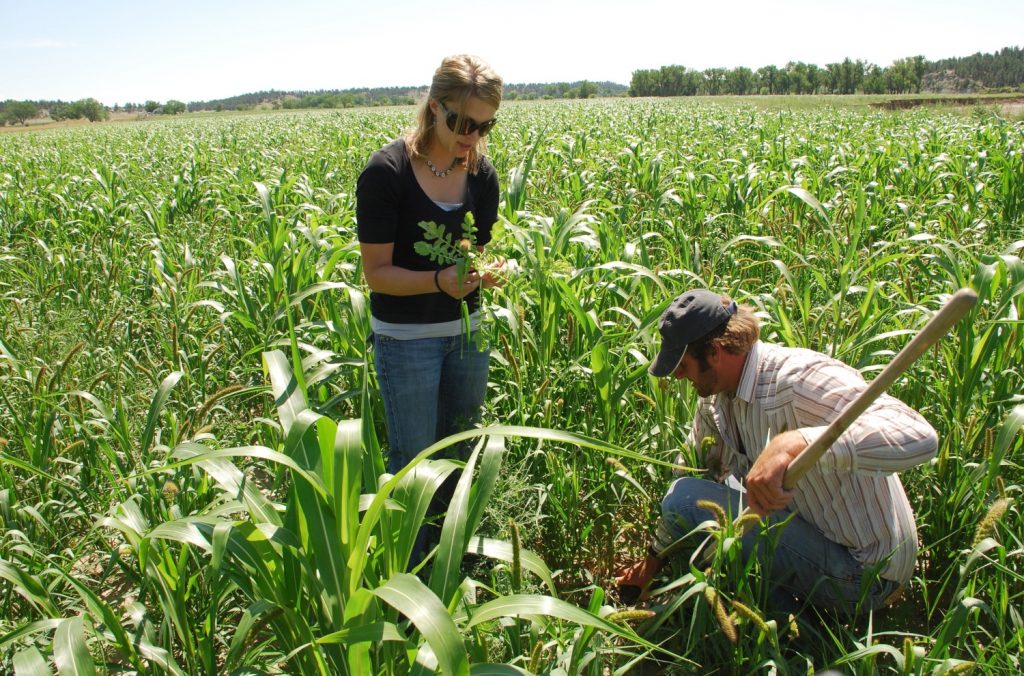
How can you make your vegetable garden more sustainable?
Sustainable gardening sounds like it could be complicated. It’s not. In fact, it’s really easy.
Here are just a few of the things you can do to make your vegetable garden as sustainable as possible so you can support the health of your local ecosystem.
Go organic
We touched on this earlier, but it bears repeating. Not all organic gardens are sustainable. But all sustainable gardens are organic.
If you want to lessen the negative impact you may be having on the environment, the first and, perhaps, most important thing you can do is ditch the chemical-based agricultural products.
No more hazardous herbicides, fungicides, and insecticides.
The harmful pollutants in these products don’t just contaminate the soil and find their way into local ponds, rivers, and streams. They also have a devastating effect on bees and other pollinators.
Pollinating insects play a critical, irreplaceable role in every ecoregion. So much so that the health of a given ecosystem can be measured by the health of its pollinator populations.
If you need to get rid of weeds, try a weed torch instead of an herbicide. And opt for homemade insecticides and fungicides as well.
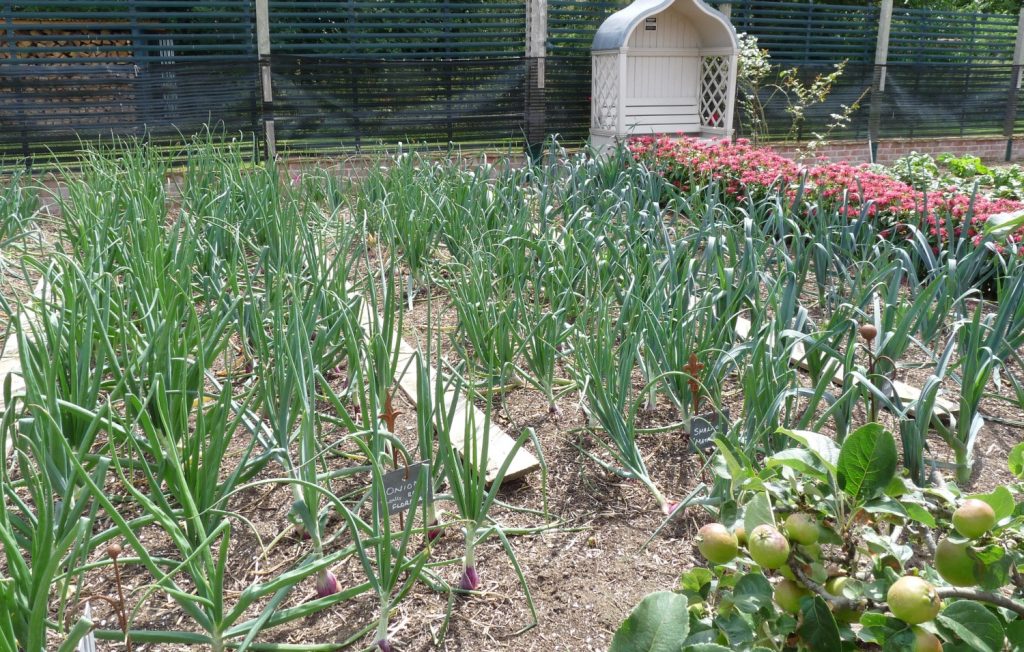
Use organic fertilizers to enrich the soil
When you commit to going organic, that means keeping synthetic fertilizers out of your garden, too. But with no synthetic fertilizers at your disposal, what should you use to feed your plants instead?
If you want to grow a good garden, then you don’t need to feed the plants. You need to feed the soil.
A sustainable garden is one that improves the health and quality of the soil with the help of organic materials like manure, feather meal, worm castings, and fish fertilizer.
As these natural materials degrade, they release valuable micronutrients into the soil, which nourish the healthy bacteria that call the soil home. As these bacteria feed on organic fertilizers, they break down nutrients making them easier for your plants to absorb.
For best results, we recommend testing your soil before enriching it, that way you know which materials you need.
Try to use locally-sourced organic fertilizers, if it’s within your ability to do so.
Many farmers and ranchers are happy to let gardeners haul away as much manure as they want. Maybe your neighbors raise chickens. Try asking them for some manure in exchange for fresh produce later on in the season.
Using locally sourced materials lessens your environmental impact. Plus, it’s usually cheaper to buy local, anyway!
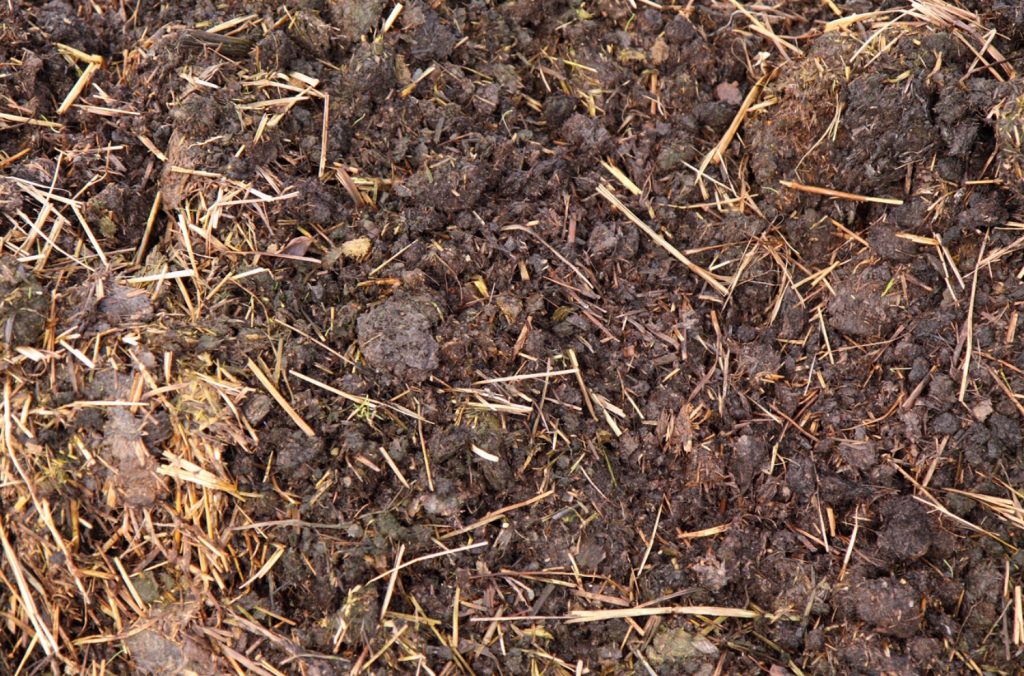
Start composting
Another great source of organic fertilizer is compost. You can start composting today to make your garden most sustainable. All you need is a 5-gallon bucket.
Of course, if you have a large garden, you’ll need more than a bucket. Use wooden pallets to construct a bin, and fill it with a 1:1 ratio of green matter and brown matter.
Green matter includes fruit and vegetable peels, uprooted weeds, old vegetable plants, lawn clippings, and pruned foliage.
Brown matter includes cardboard, shredded paper, straw, dead leaves, wood chips, and small sticks.
You can enrich your compost by adding organic fertilizers to it. Blood meal and feather meal are excellent sources of nitrogen, whereas bone meal and banana peels are great for introducing phosphorus and potassium to the mix.
We also like to add kelp meal and rice water to our compost heaps. These materials are rich in trace minerals that help keep the soil healthy.
Use locally sourced organic mulch
Mulch is so, so helpful when it comes to gardening sustainably. A thick layer of mulch suppresses weeds and locks moisture into the soil so you won’t have to water your garden as often.
Mulch also helps regulate soil temperature because it acts like insulation.
We always apply mulch, especially if we’re growing in raised beds, which often drain more quickly than in-ground vegetable patches.
Mulch protects plant roots from frost, and it helps keep roots cool in the heat of the summer so plants can continue to produce.
Woodchips are traditionally used as mulch. If you have some downed trees on your property and a woodchipper, it’s easy enough to make your own!
However, you can use other organic materials as mulch, too. Old hay, lawn clippings, shredded paper, and cardboard also work well.
Some gardeners forgo mulch entirely and plant groundcover between their crops instead. Mint, thyme, and chamomile can be used as a living mulch to seal water into the soil and keep your vegetable garden growing great!
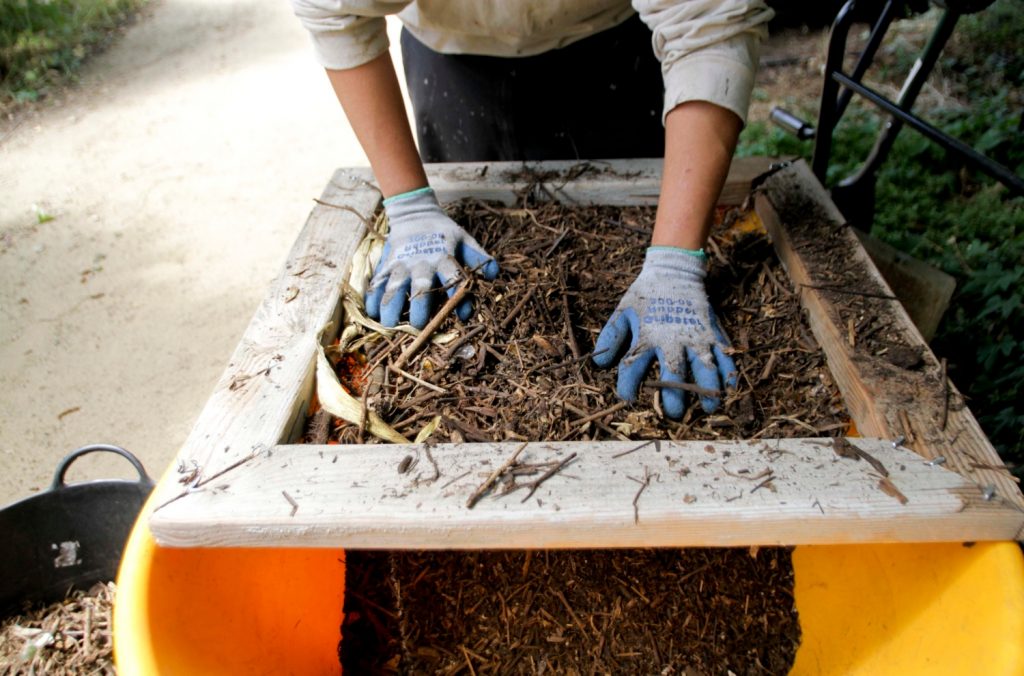
Control stormwater and collect rainwater
Managing stormwater is a key component of sustainable gardening. Runoff from gutters can slow drainage to local waterways, leading to flooding. Additionally, the water that ends up in nearby ponds and lakes is often contaminated with harmful pollutants.
It’s important to slow runoff as much as possible to give the water time to soak into the soil, where plants can filter harmful contaminants out.
Dig ditches in low areas of your backyard, and be sure to plant vegetation in them to prevent erosion. Direct the water to a rain garden, or a low spot where it can sit and soak in.
Place water-loving plants, like willow trees and sedge grass, to soak up the extra stormwater.
Place a rain barrel at the end of your gutter to collect rainwater, and use this to water your garden. This is an excellent use of resources, and can really help you save on your water bill.
If you are unable to collect stormwater because local or state laws prevent you from doing so, you can still cut down on your water usage by installing a drip irrigation system.
Soaker hoses, and even old garden hoses with a few holes drilled into them, make it easy to keep your garden hydrated as well.
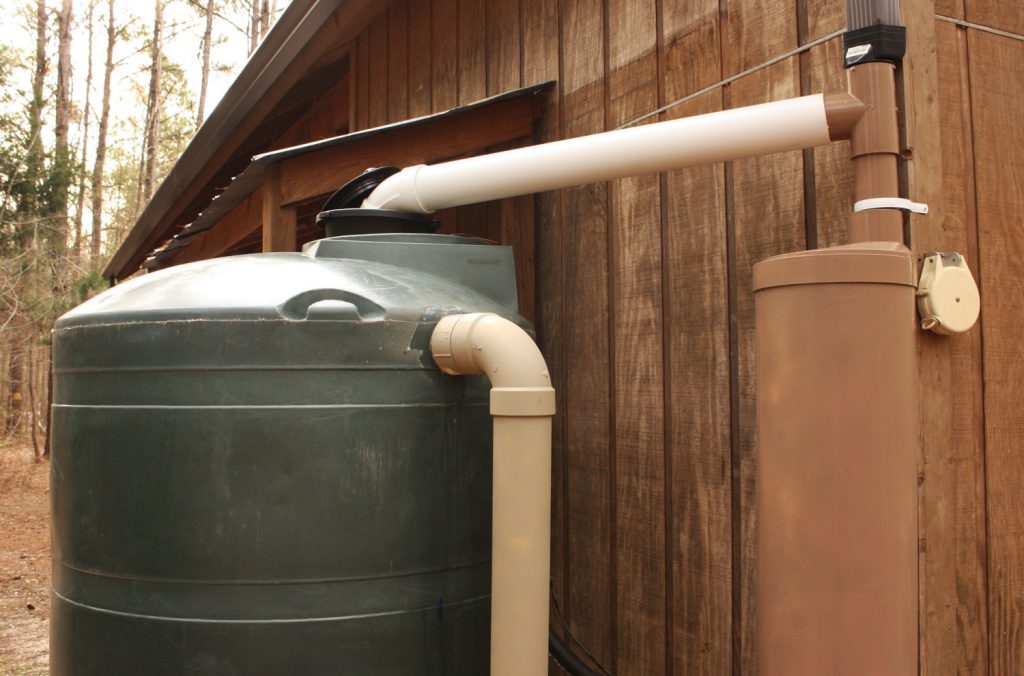
Utilize companion planting
Companion planting is a centuries-old strategy that allows you to enhance the growth of your crops, attract more pollinators, and repel damaging insects naturally.
Certain plants get along with each other better than others. For instance, tomatoes and basil are traditionally grown together. The latter is said to enhance the taste of the former, and both plants can help keep pests away from each other.
Many growers keep corn, beans, and squash as companions, too. These plants, known as the “three sisters” in keeping with Native American traditions, nourish each other and support each other’s growth.
Companion planting allows you to utilize your garden space efficiently. It’s also an easy way to attract pollinators.
Grow marigolds as a border around your garden, or plant sunflowers along the far side of your raised beds. Keeping these bright, flashy flowers as companion plants invites more pollinators to the space.
Flowers also draw the attention of predatory insects, like ladybugs, hoverflies, and wasps, which prey on pests, like aphids, and act as natural insect control.
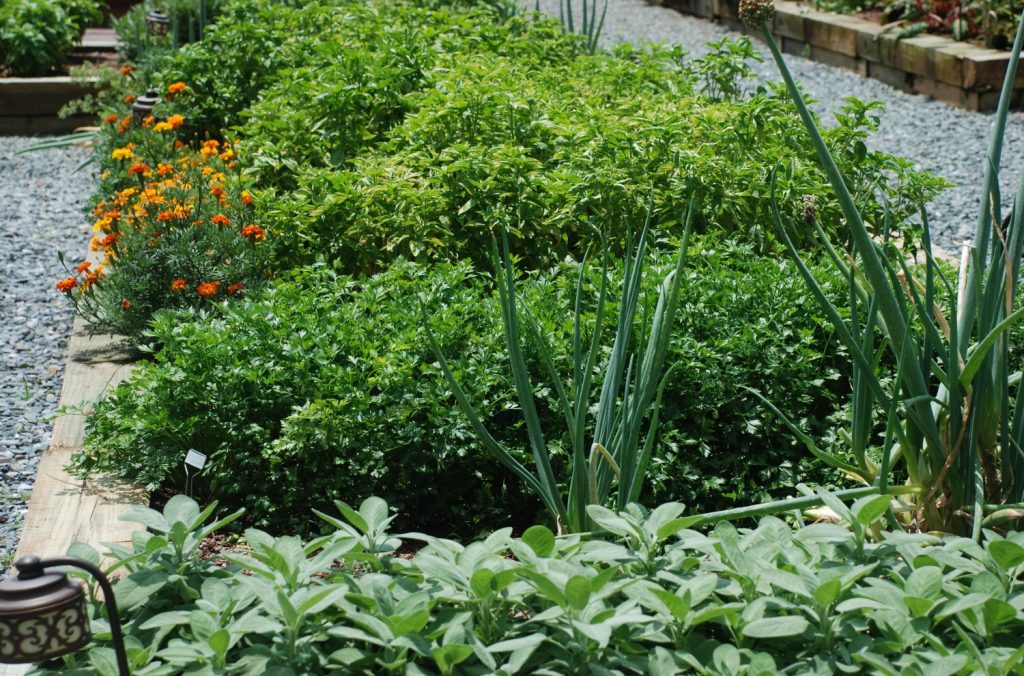
Upcycle whenever possible
If you start saving every little thing you find thinking that you might be able to put it to use one day, you’ll end up with a hoarding situation on your hands.
We don’t recommend accumulating more and more junk. In fact, doing so just leaches more pollutants into the soil, and it’s important to dispose of your refuse responsibly.
But upcycling whenever possible is absolutely in keeping with the sustainable gardening mindset.
Maybe you’ve just dug up an old brick walkway and replaced it with flagstone. Why not set the bricks aside for a project later on?
You can use bricks to create a stand to hold a basin to use as a bird bath to attract more birds to your garden. They’ll help keep bugs out of your garden. Just be sure to cover your crops with netting once they begin producing fruits.
Why not use the galvanized sheet metal leftover after your new roof installation to construct new raised beds? Or the pallets leftover from your garden soil delivery to construct a trellis? Or the wicker basket from the coffee gift set your coworkers got you for your birthday to grow some cherry tomatoes on your patio?
When it comes to upcycling, the possibilities are endless. You can use all sorts of leftover materials to make gardening easier. All you have to do is think creatively!
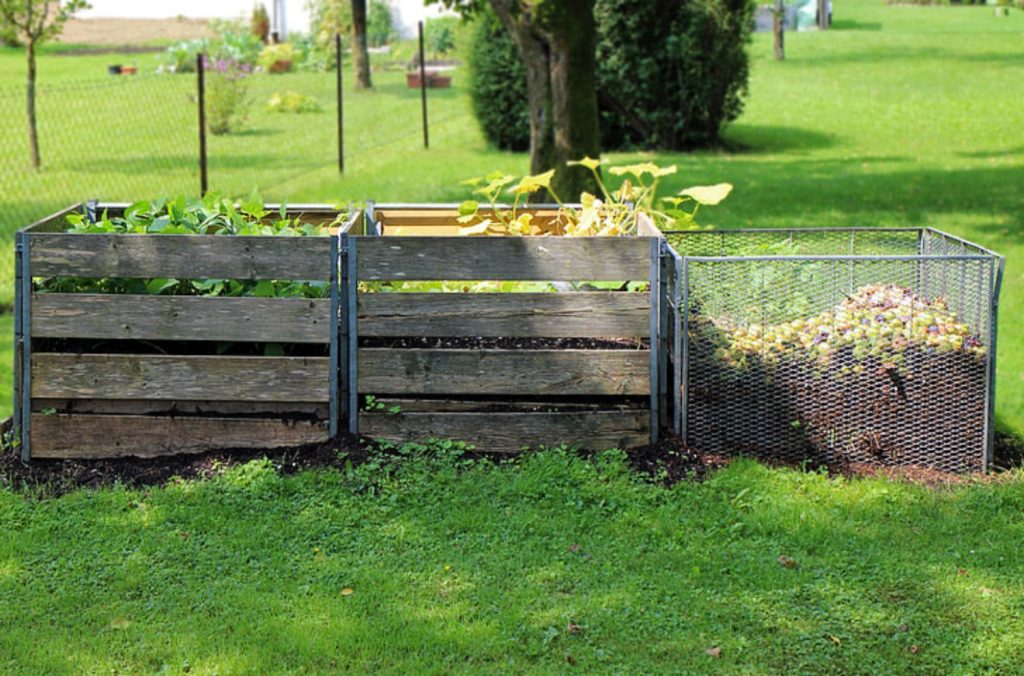
Choose native plants
Maybe you don’t have a vegetable garden. That’s okay. You can still utilize all of these sustainable gardening tactics in your backyard flower beds.
Another way that you can make your landscaping more sustainable is by choosing native plants.
By planting flowers, grasses, shrubs, trees, and vines that are native to your ecoregion, you’ll be doing your part to support your local ecosystem.
It’s worth mentioning that planting native plants in your landscaping also makes it much easier to maintain. Native plants require significantly less care than ornamental plants. They’re also your local pollinator’s preferred food source.
Use this fantastic native plant finder to determine which plants are the most eco-friendly for your growing region.
Growing pollinator-friendly native plants, like milkweed, as companions in your vegetable garden is also a good way to boost pollinator rates and enhance performance.
More tips for growing a sustainable garden
Choosing sustainable practices will make your garden more sustainable, obviously. But usability is another important factor at play when it comes to determining whether or not a garden is sustainable.
Let’s take a look at some of the things you can do to make sure you get plenty of use out of your vegetable garden for many years to come.
Grow in raised beds
We’ve had many gardens over the years. Some we’ve planted in containers, some in the ground, some in large constructed beds.
Growing in raised beds is best, and if you can do it, you should.
Raised garden beds are far more sustainable for several reasons. To begin with, they’re much easier to maintain than in-ground vegetable patches since you don’t have to bend down on your hands and knees to reach them. Because they’re easy to use, you’ll be more likely to use them.
We’ve seen many new gardeners give up on gardening altogether because it’s too hard. Gardening is supposed to be fun. Raised beds allow you to get more out of the experience.
And because raised beds make gardening easy, that means you’ll be more likely to stick with it, which will benefit your environment in the long run.
Growing in raised beds also makes it much easier to control what goes into your garden. You can mix your own soil blend, fertilize plants without altering native soil, and reduce your impact on the ecosystem while still providing pollinators with a food source.
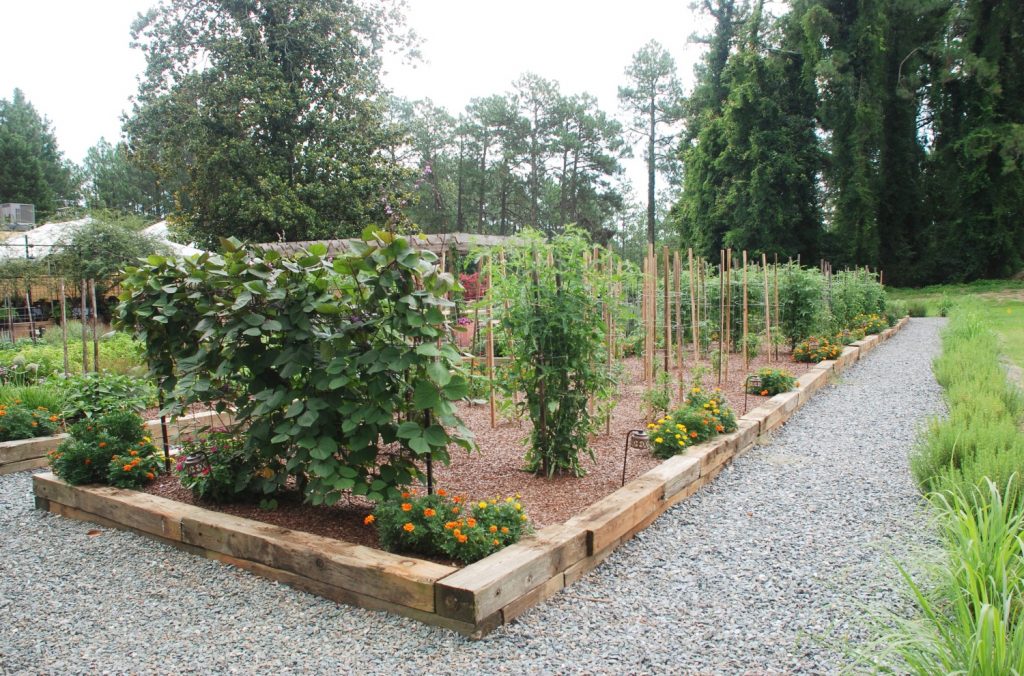
Choose the right spot
When planning your garden, as important as it is to ensure you keep plants next to their preferred companions, it’s equally important to choose the right location for your fruits and veggies.
Pick a spot in your backyard that receives 6 to 8 hours of sunlight, preferably with some dappled afternoon shade.
The spot should be sheltered, where it won’t catch strong wind gusts. Be sure to choose a spot with good drainage.
The ideal location for your garden can vary from season to season as shade trees grow and the landscape changes. Reevaluate your garden’s location as needed.
This is another very good reason to grow in raised beds. If you ever need to move your garden from one place to another, raised beds make the process easy.
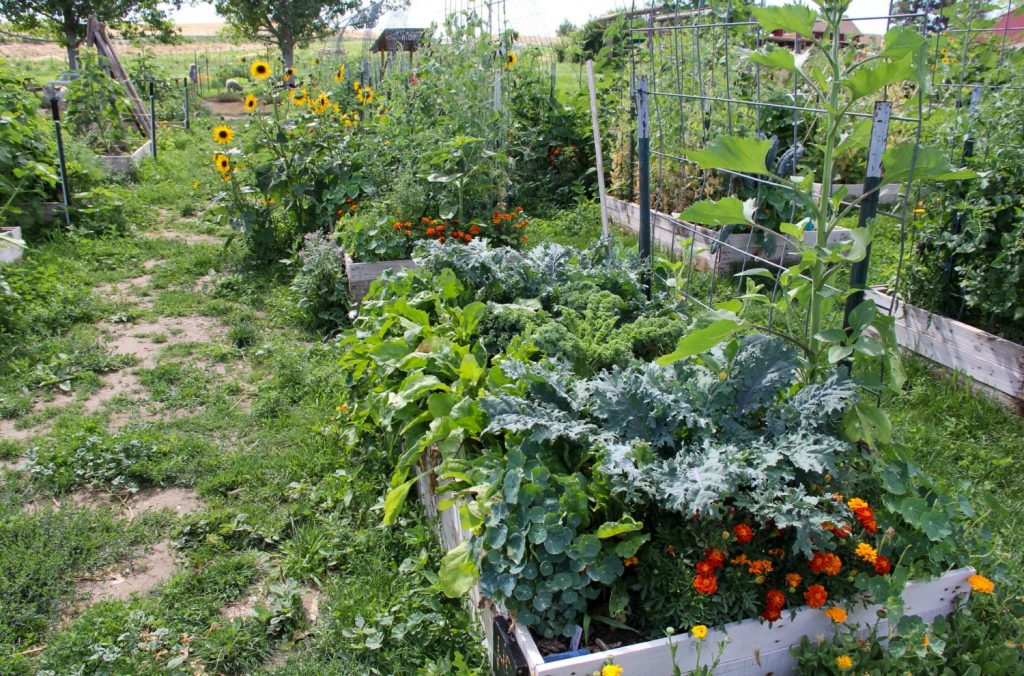
Purchase high-quality seeds
You forgot to start your seedlings indoors this year. Maybe you were too busy with other things. In any case, you broke down and bought some plants from the local hardware store.
After months of fertilizing them, watering them, and keeping the bugs off of them, the fruits are finally ripe and ready to eat. You take your first bite, and… it’s disgusting.
We’ve been there.
If you want to garden sustainably, then it needs to be worth your while. What point is there in growing a garden full of fruits and vegetables that you end up tossing in your compost bin?
You put a lot of work into your garden, and you sure as heck aren’t doing it for mediocre, mushy, tasteless produce. So do yourself a favor and invest in high-quality seeds.
Heirloom varieties consistently produce the best fruits, in our experience. The fruits are uniform in appearance and taste. Of course, you can choose hybrid varieties, too. We’ve been known to experiment ourselves, especially when it comes to tomatoes.
The point is that you’ll have far more success in your garden if you purchase seeds from a reputable seed catalog or nursery. These seeds have been harvested from the most suitable plants and stored appropriately to ensure germination.
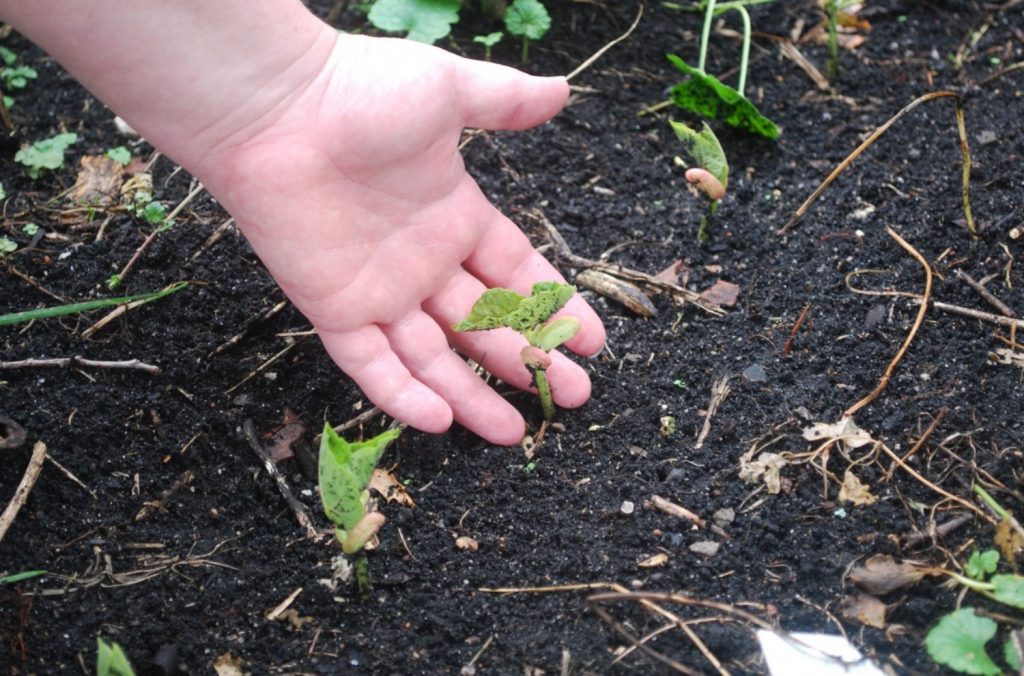
Avoid tilling
Back in the day, if you wanted to plant some vegetables in your backyard, you got out there with your rototiller and started plowing the soil under.
Little did we know, that’s one of the worst things you can do if you want to grow a sustainable garden!
Tilling the soil may make it loose enough to work with, and it can be helpful if you need to clear a garden full of weeds. But what it does is churn up the soil, exposing beneficial bacteria to the air, where they quickly die.
Since these bacteria support plant health by improving your crops’ resistance to pests and diseases, killing them off is the last thing you want to do.
We realize that sometimes, tilling is a necessary evil. But, it’s one that you could avoid completely if you grow in raised beds. Consider this another advantage of growing in a raised garden.
If you need to prep space for an in-ground vegetable patch, you’re better off laying something over the surface of the ground to kill off the weeds.
Lay a tarp over the space several months in advance, or cover it with newspaper and cardboard.
We also highly recommend the Ruth Stout method, which involves using organic materials like sticks, leaves, and hay to create an 8-inch layer of mulch.
Eventually, these materials snuff out weeds, providing your fruits and vegetables with the perfect substrate to start growing in. Talk about sustainability!
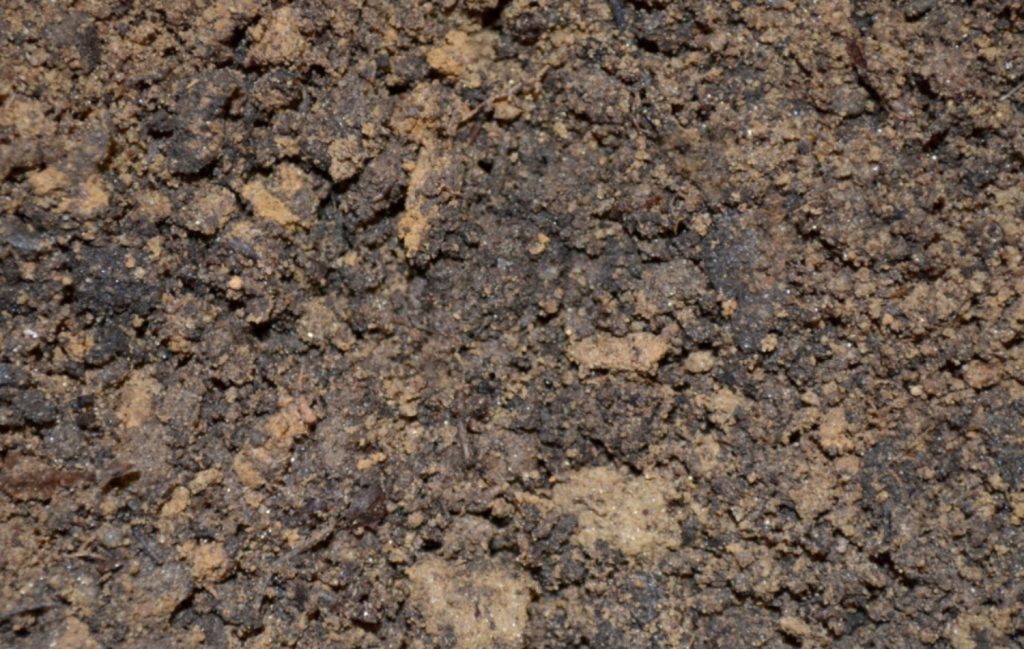
Keep spacing in mind
Where you set your plants within a given space can also influence your garden’s sustainability. Obviously, you want to grow as much as you can in your garden.
Here’s where it gets a bit tricky. You need to plant your seedlings as close as possible so that they kill off neighboring weeds and shade the soil to prevent it from drying out.
But you also need to make sure that your plants aren’t so close together that they begin to compete with one another.
Check the back of your seed packet when transplanting your seedlings. Keep plants at the minimum recommended distance apart.
This will help you make the most of the space in your garden, without causing your crops to rob each other of nutrients.
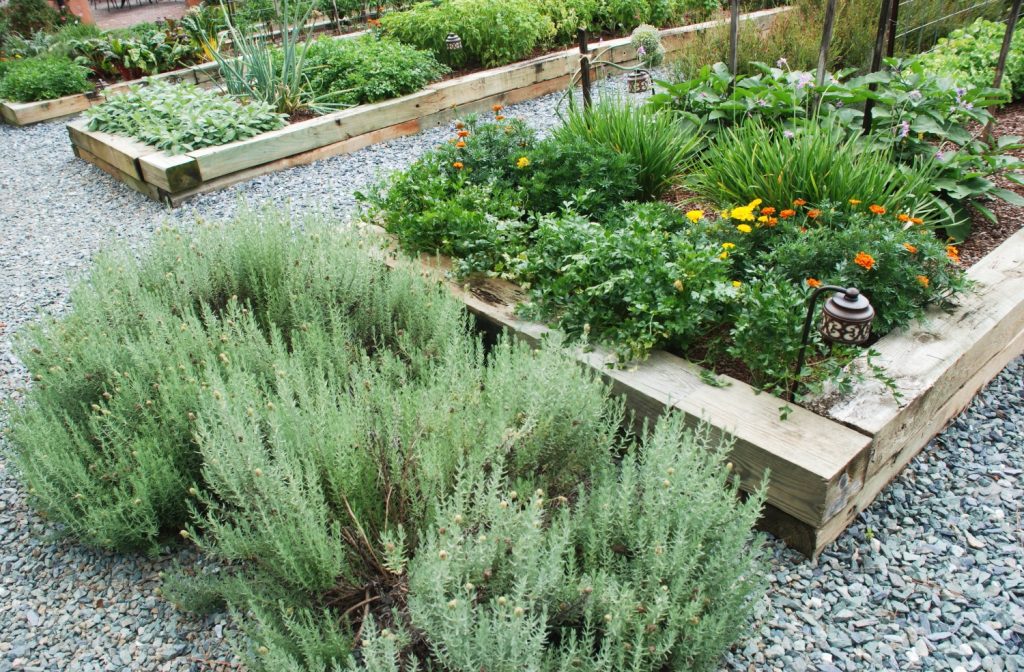
What are the benefits of a sustainable garden?
Aside from the obvious benefit of supporting the environment, there are several additional advantages to be enjoyed by growing a sustainable garden.
For one thing, you can cut way down on your water bill.
By harvesting rainwater and making good use of organic, locally sourced mulch, which will help the soil retain more moisture, you won’t have to break out the garden hose nearly as often.
Speaking of mulch, a dense layer of mulch can work wonders for keeping weeds at bay.
Gardening can be fun. We’re passionate about it! But pulling weeds? Mm. We’re less passionate about that.
Weeding is back-breaking work. Fortunately, when you garden sustainably, you won’t have to weed your garden beds nearly as often.
Sustainable gardening allows us to reduce waste. By turning throwaway materials like cardboard egg cartons and table scraps into compost, we cut down on the amount of garbage we put in landfills.
Utilizing companion planting as a sustainable gardening tactic also attracts more pollinators to your backyard. So if you want to bring more wildlife to your garden, choosing sustainable practices is a surefire way to do so!
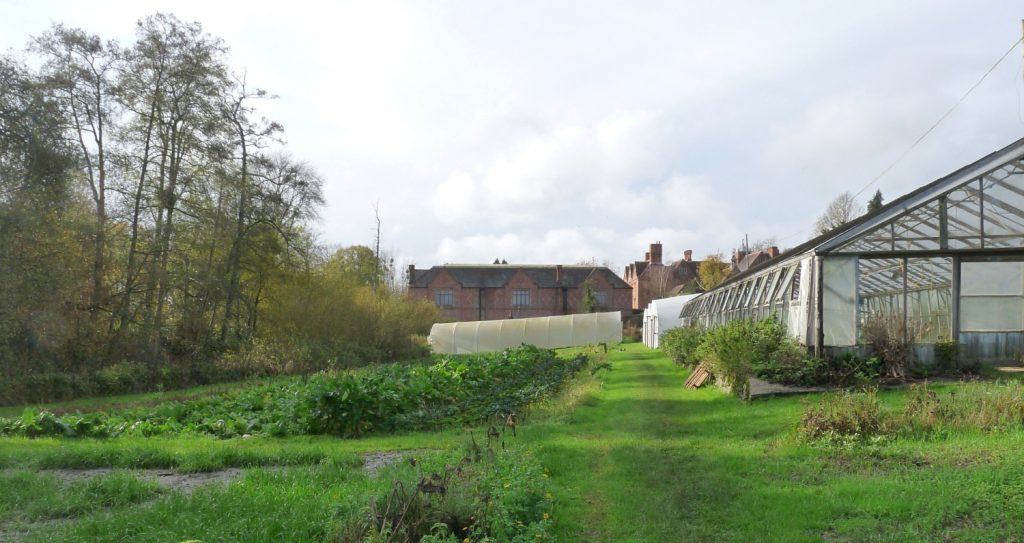
Start growing sustainably today
When it comes to growing sustainably, there’s really nothing to it! It’s all about gardening smarter, not harder, with the aim of improving the ecosystem around you.
If you’re a fan of gardening, you know just how rewarding it is to bring something to your dinner table that you grew yourself.
Well, when you use sustainable practices, gardening becomes doubly rewarding. Not only do you get to harvest the fruits of your labor, but the natural world around you reaps the benefits, too!
